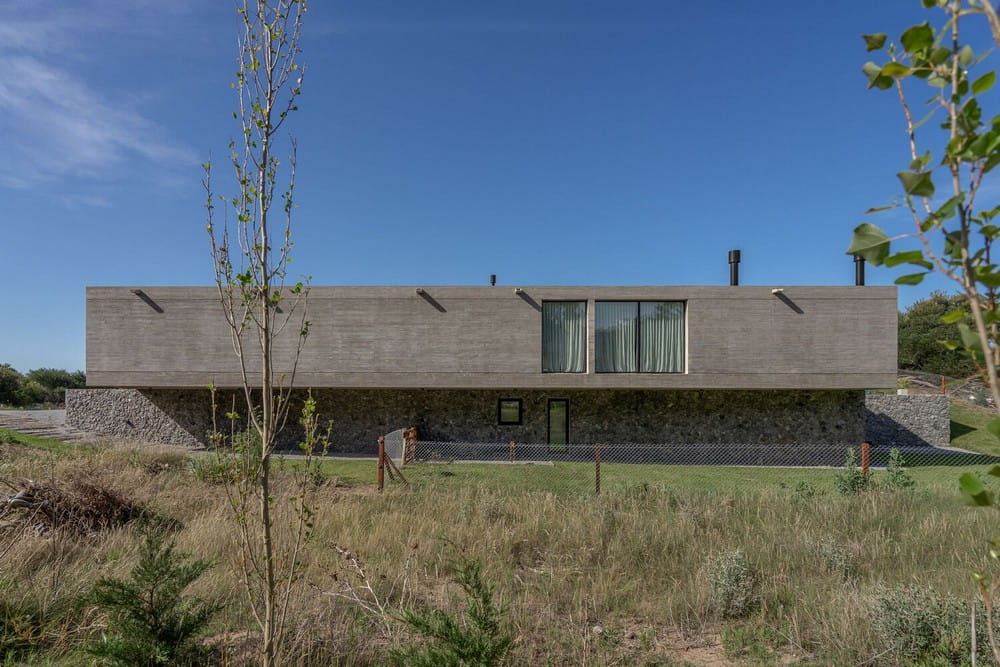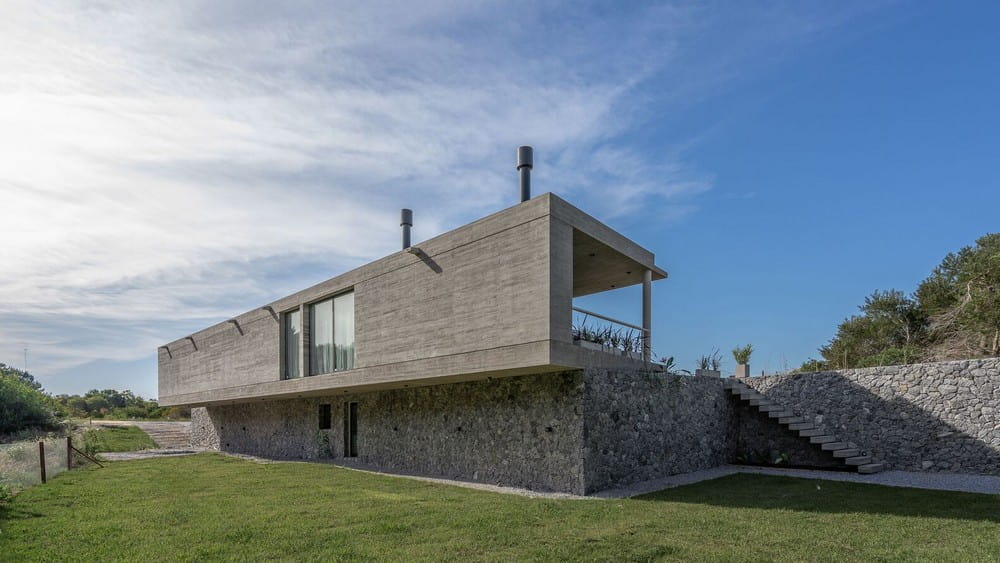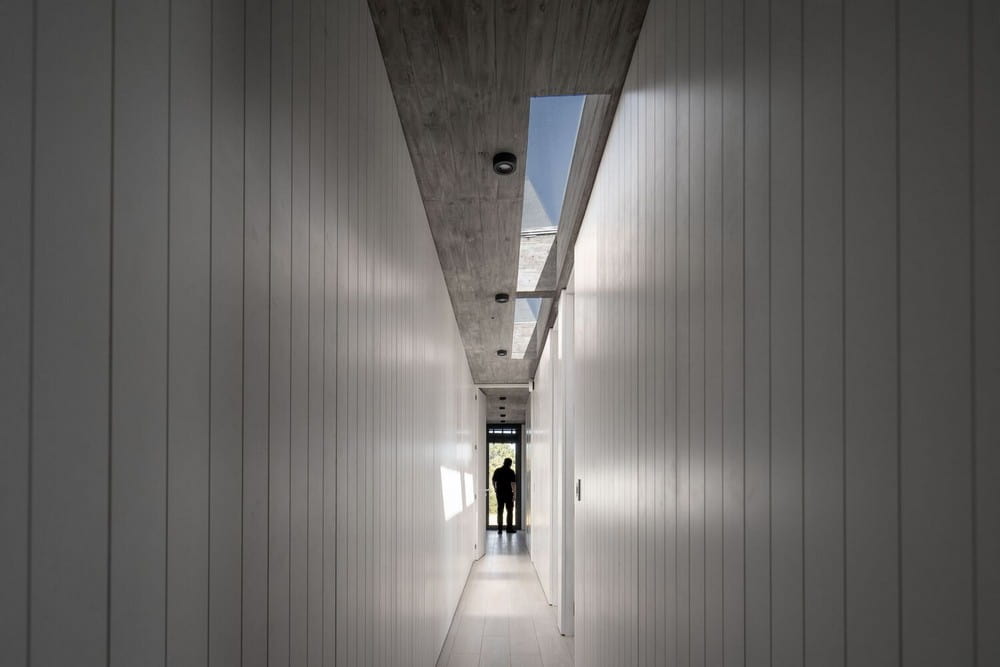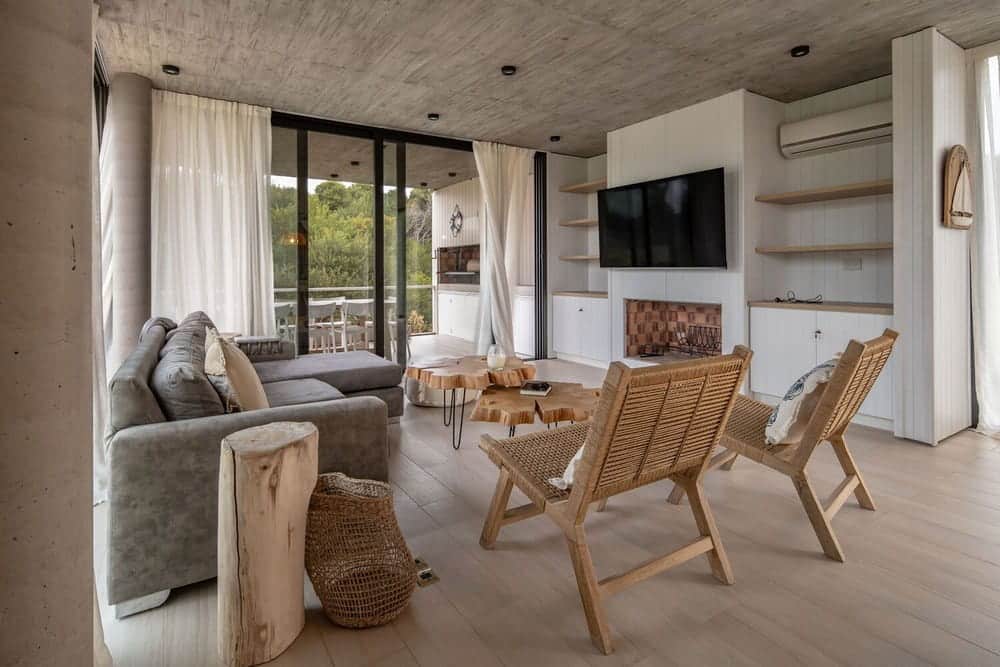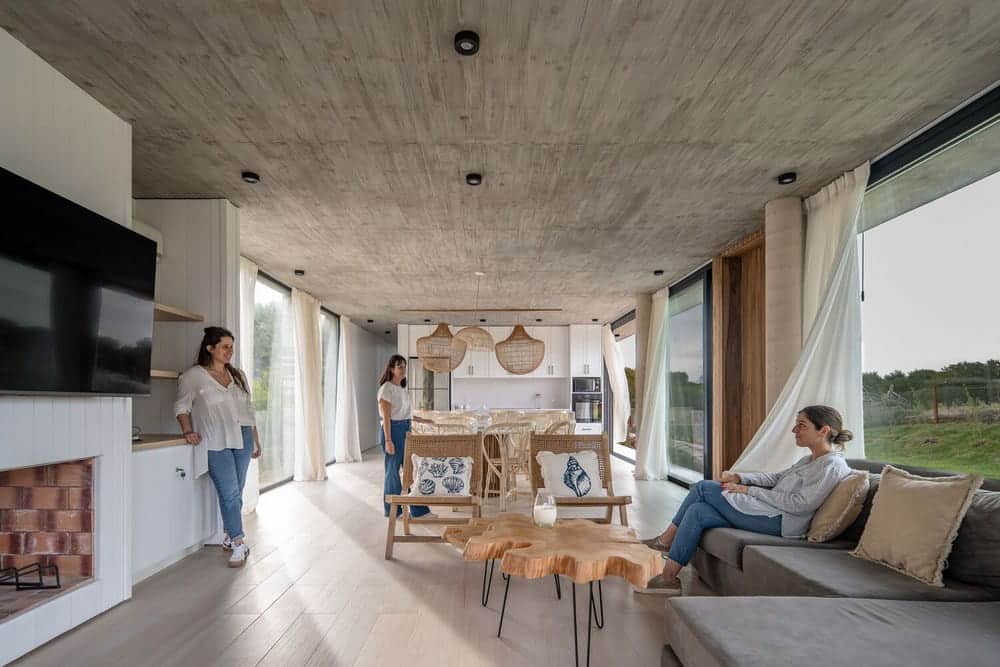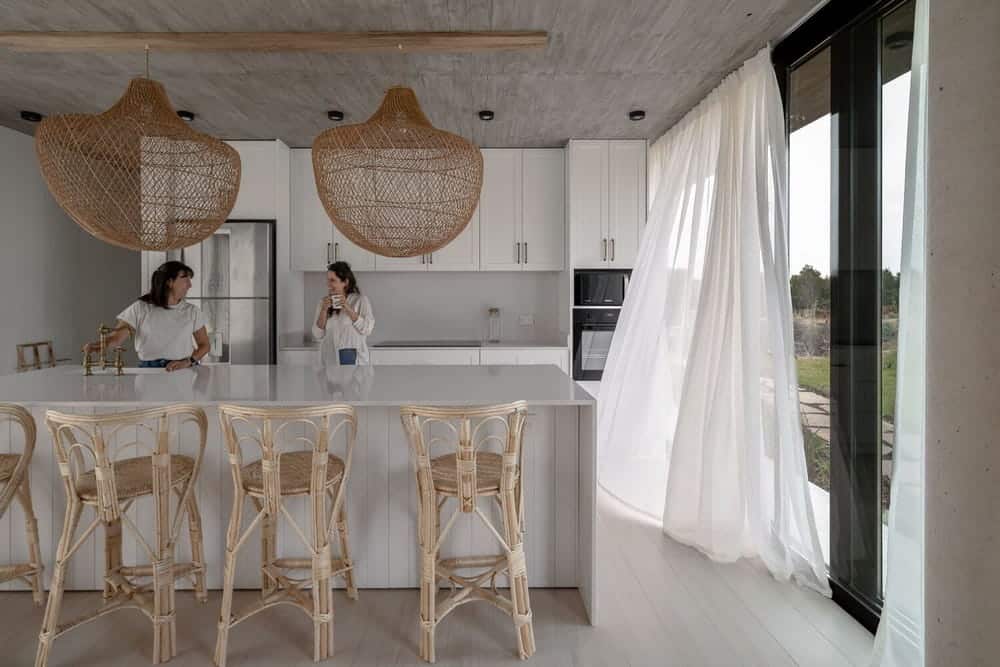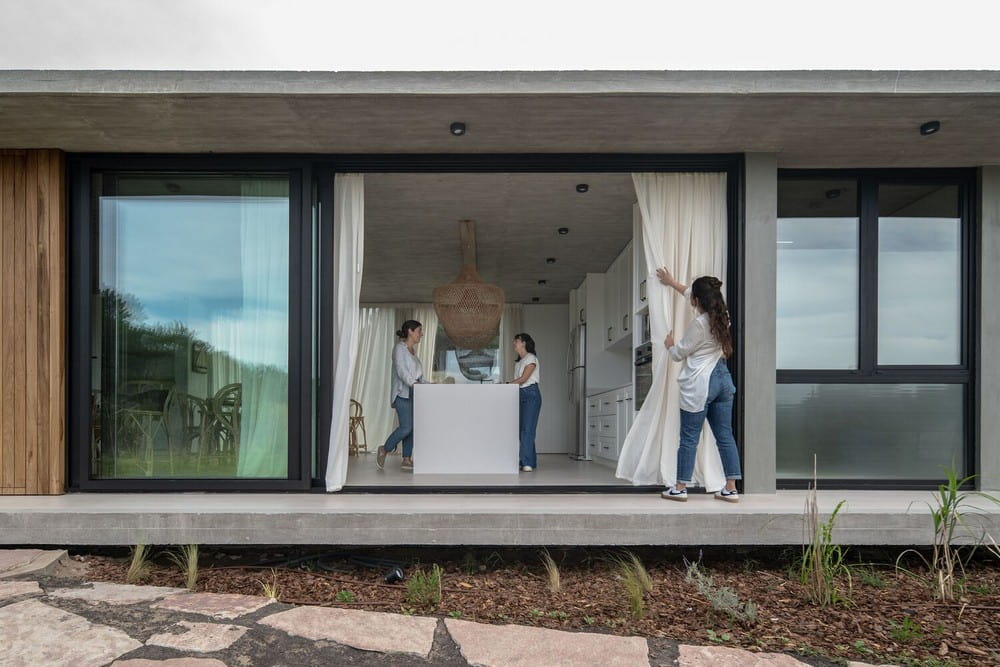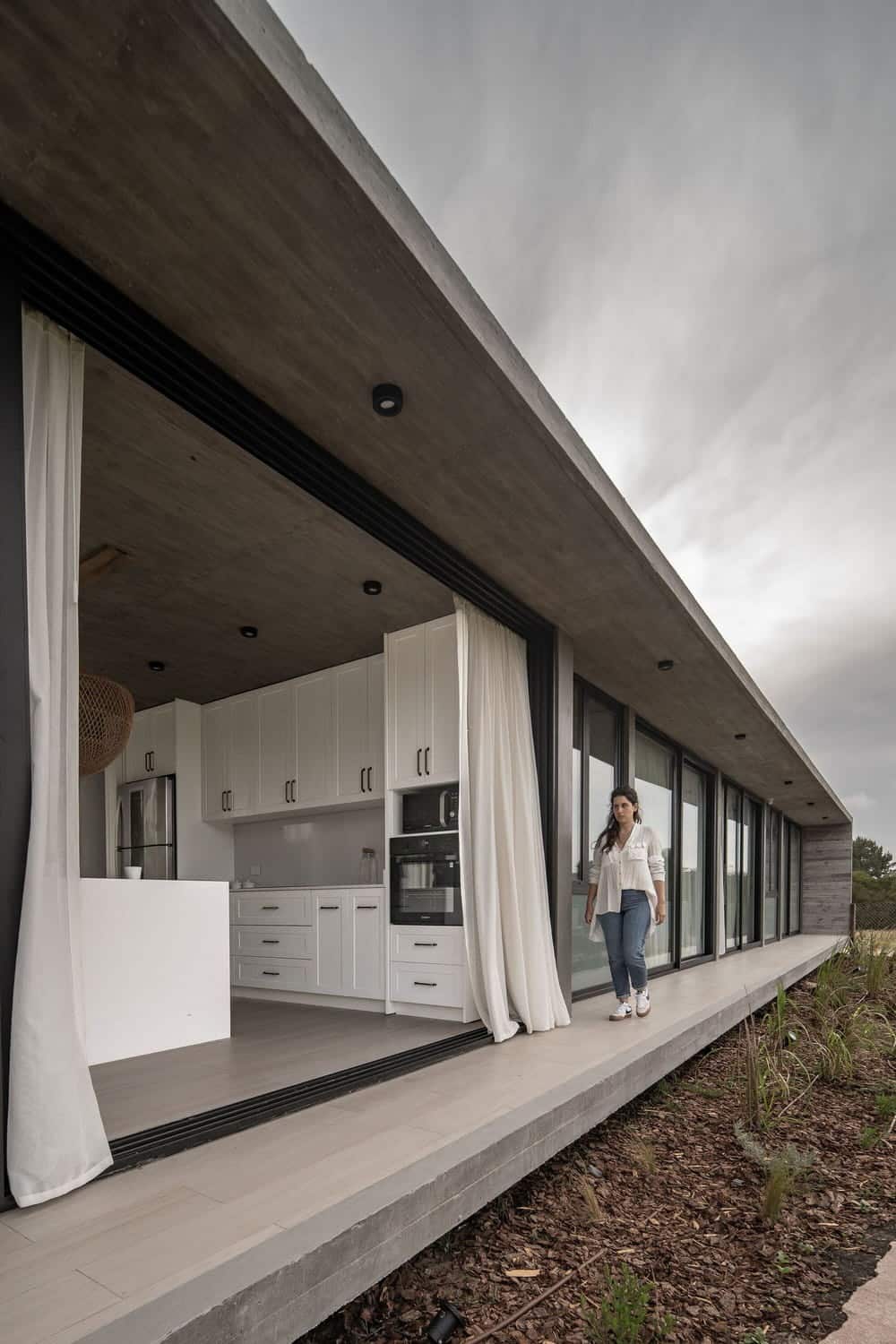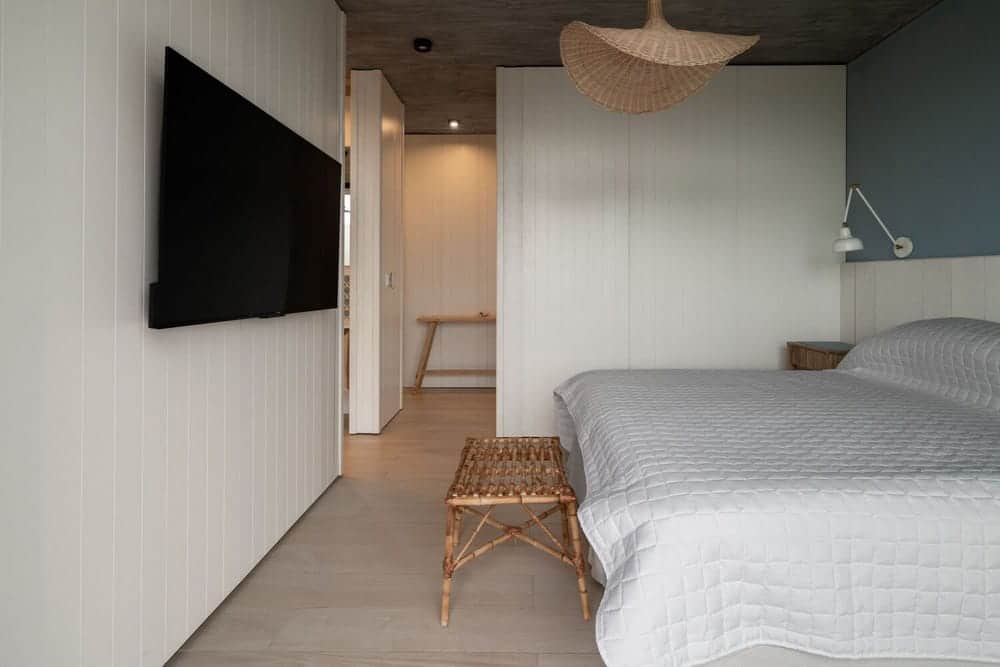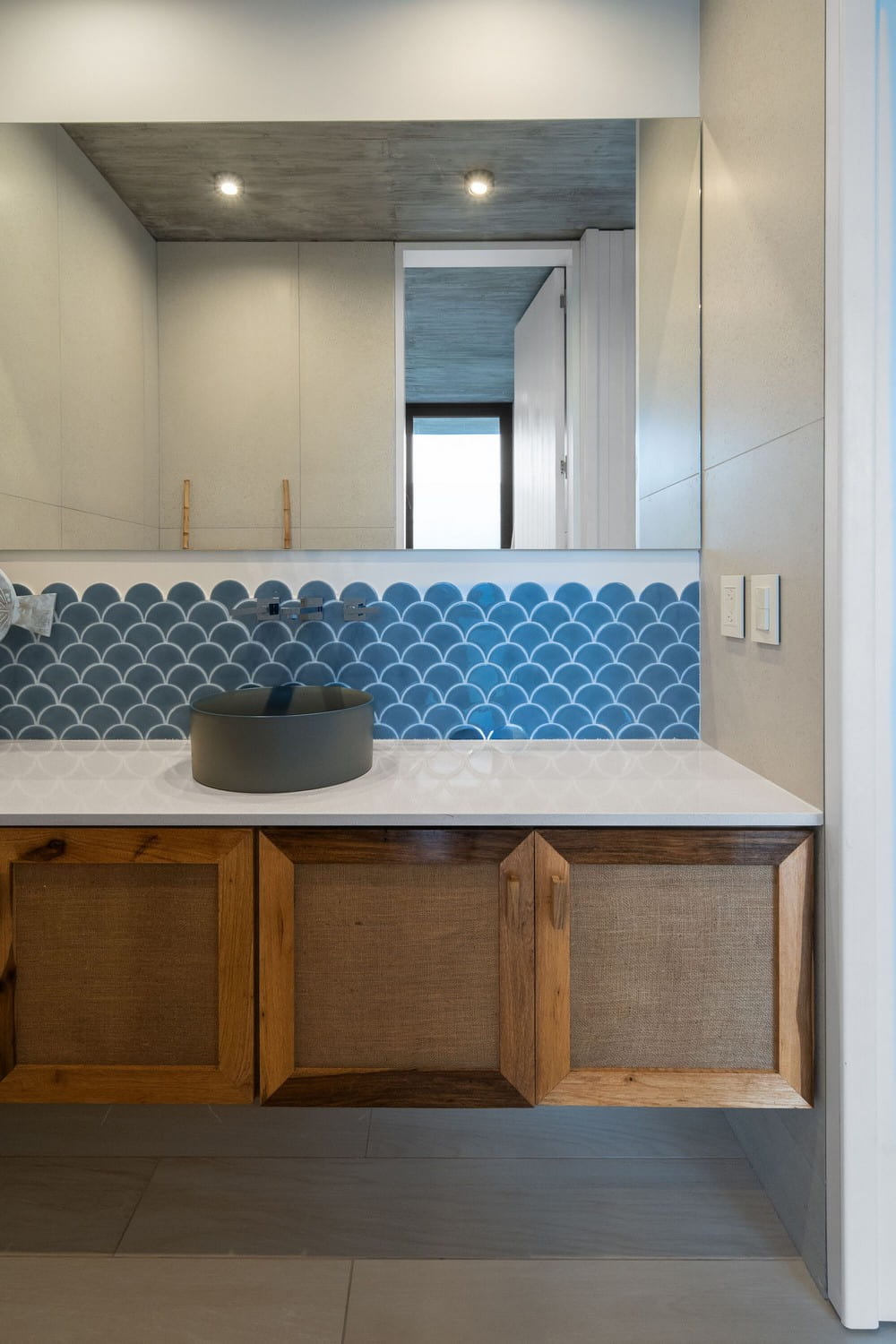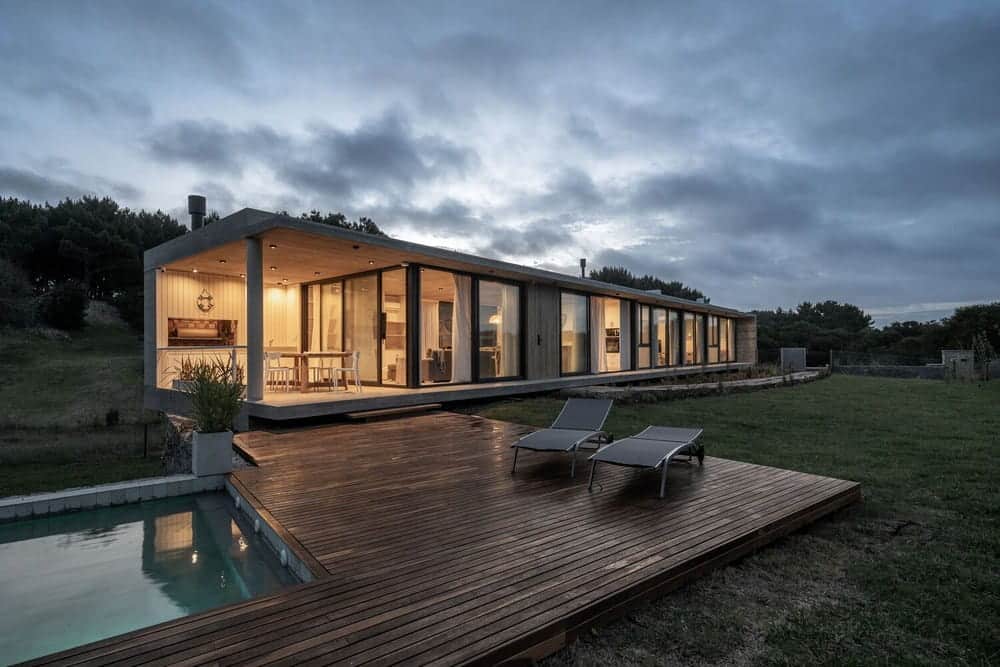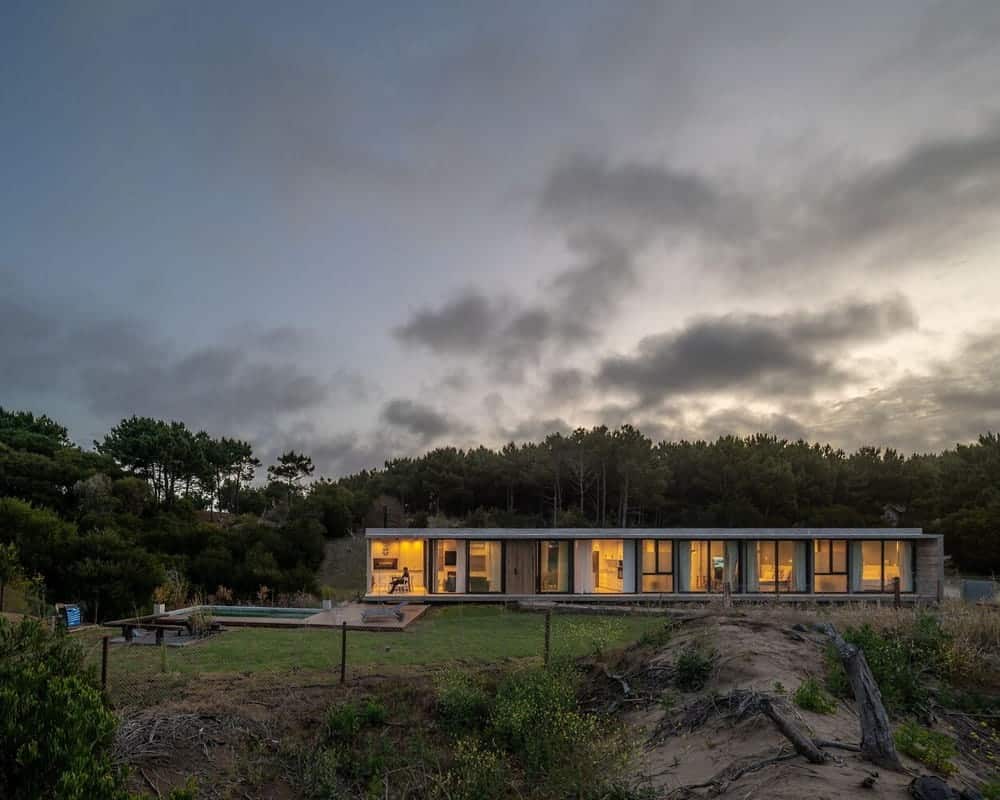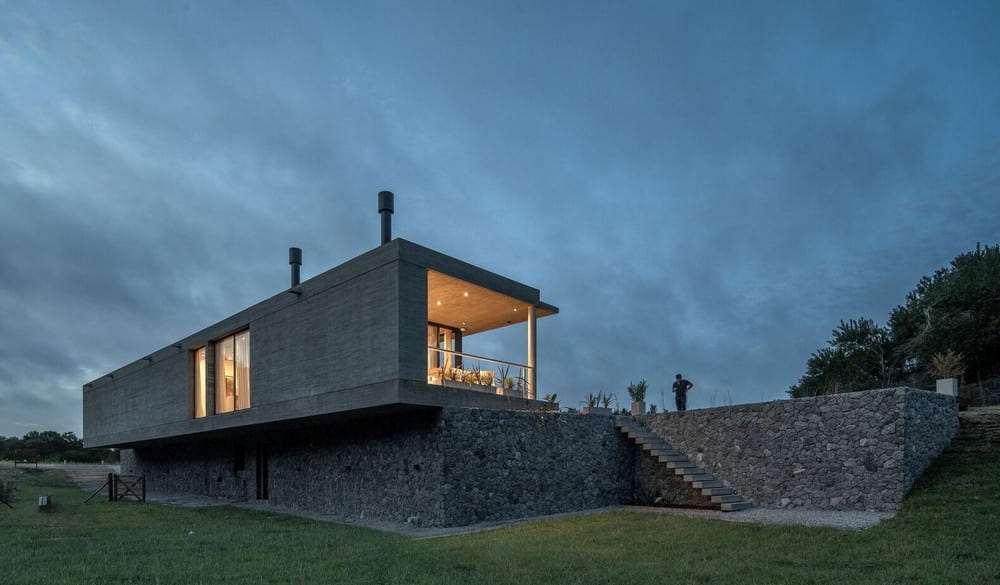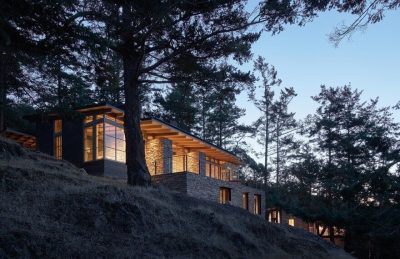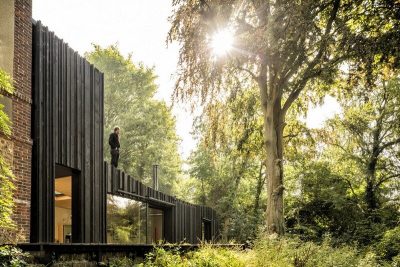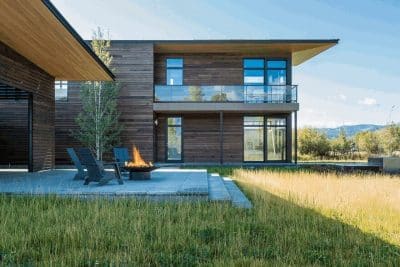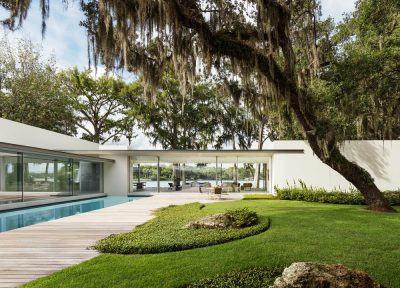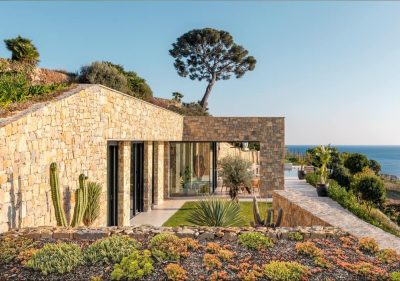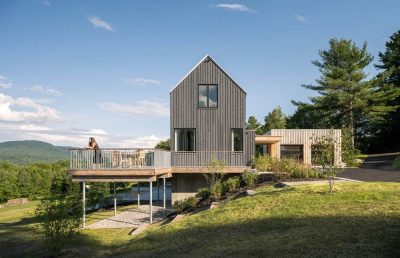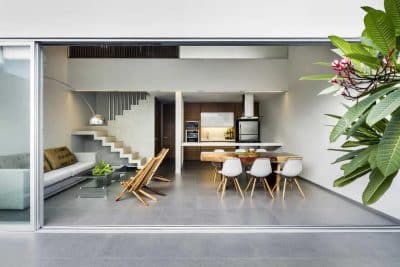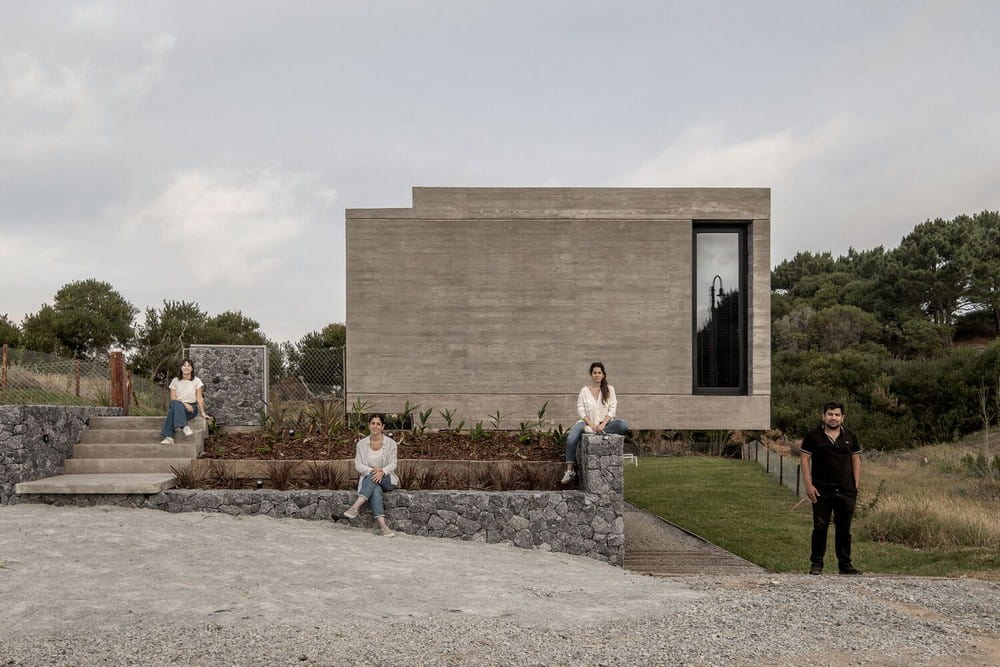
Project: Pirca House
Architecture: En Obra Arquitectos
Design Team: Luis Cisneros, Rosario Hillebrand, Sofia Falcón, Eugenia Sosa Abab.
Collaborator: Facundo Casales
Contractor: Narciso González, Albaro Franco
Location: Buenos Aires, Argentina
Area: 1000 m2
Year: 2023
Photo Credits: Mariano Imperial
Bordering the coastal city of Pinamar, a series of urban development projects, among which is the “Costa Esmeralda” neighborhood. Surrounded by forests and coastal dunes, it has as its limits the Argentine Sea to the east along its longitudinal extension, National Route No. 11 to the west, and characteristics that encourage residential growth on a small and large scale. Pirca House is located within the neighborhood on a rectangular lot, with a steep difference in level longitudinally dividing it in two, exemplifying its greatest quality.
In response to this, a wall was designed to define the terrain in two levels and a volume supported on it. The term “Pirca” refers to walls that act as containment for embankments, delimiting roads and paths, or enclosures (closed space for cultivation), commonly used by Andean peoples.
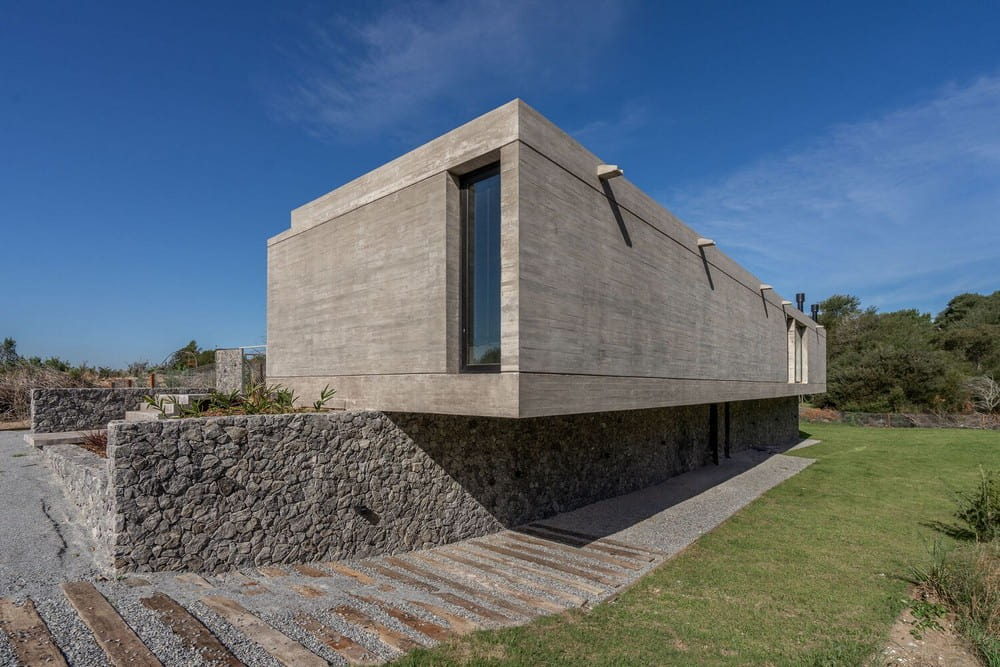
Applying both ideas, in a complex lot like the one mentioned, a wall is proposed that, throughout its total length, develops different functions: while creating the entrance and garage space, it contains a slope, supports the house as support, provides storage space underneath, and ends with the boundaries of the pool.
The functional response seeks to take advantage of both the particular quality of the lot and the best orientation, presenting a pure volume of closed concrete on the south side and open on the north side. Under the concept of a summer residence, materials that do not require constant maintenance are fundamental in the coastal area. We combine a mixed construction process that emphasizes the purity of materials, such as exposed concrete and local stone.
The aluminum carpentry materialized in black anodized color provides its own shine and transparency. The chosen and integrally designed furniture throughout the house was made of white lacquered MDF boards, enhancing the synthesis and neutrality that the house seeks to convey in its entirety, both functionally and formally.
